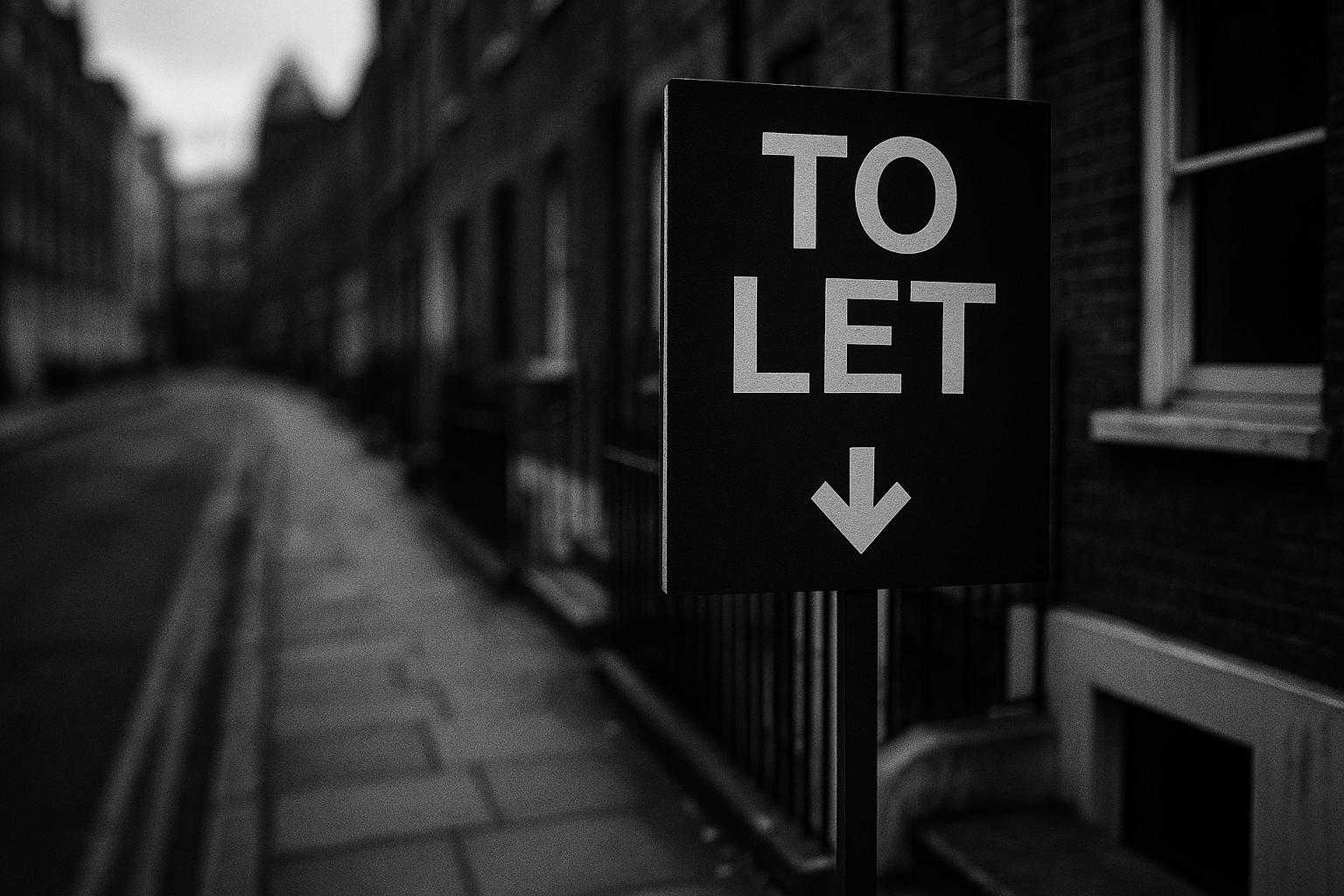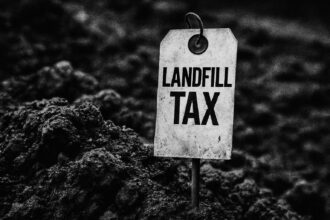Hamptons’ lettings index shows the average rent on newly let properties fell 0.2% year‑on‑year in July — the first annual decline since August 2020 — driven by an around 3% drop in Greater London. The national cooling masks sharp regional differences and ongoing pressure on households: renewal rents rose roughly 4.5% and average rents remain about a third higher than in 2020.
Average private rents in Great Britain have slipped for the first time in five years, according to industry data, signalling a tentative pause in a prolonged period of steep increases. Hamptons’ lettings index found that the average rent on a newly let property fell 0.2% year‑on‑year in July, the first annual decline since August 2020; the change is small but notable because it breaks a sustained upward trend that has added materially to household budgets. According to the original report, this national figure conceals very different local experiences. (Aneisha Beveridge, head of research at Hamptons, described the market as having “paused for breath” in comments reported to The Guardian.)
The fall on new lets is modest in absolute terms and sits alongside other measures showing rents remain elevated. Hamptons and related datasets put the average monthly rent for a new let at roughly £1,370–£1,375, which remains about a third higher than in August 2020. At the same time, official figures show annual rent inflation has moderated rather than reversed, and renters continue to face substantially higher costs than five years ago.
Regional variation is stark. Greater London recorded the steepest decline in newly let rents — about a 3% annual fall in July and a seventh consecutive month of declines — while parts of Wales, the north‑east and Yorkshire and the Humber also saw falls. By contrast, seven of the 11 regions monitored still recorded annual increases, with the East Midlands, West Midlands and the south‑west among the strongest. The differing patterns between the capital and many provincial areas help explain why a small national fall can coexist with rising rents in large parts of the country.
Several structural and cyclical forces explain the easing. Industry analysts point to recent cuts in Bank of England interest rates over the past year that have reduced mortgage costs for some buy‑to‑let landlords, lessening their immediate need to pass on higher financing costs to tenants. Lower mortgage rates have also improved affordability for would‑be buyers, prompting some renters to return to owner‑occupier searches and easing pressure on demand in parts of the lettings market. At the same time, property platforms report a rising supply of available lets — Rightmove estimates the number of listings is roughly 15% higher than a year earlier — and a fall in tenant‑to‑listing competition, which has contributed to slower growth in asking rents.
That loosening does not extend to everyone. Renewal rents — the sums charged when sitting tenants sign a new tenancy — continued to rise, up around 4.5% year‑on‑year in July, according to Hamptons, meaning many existing tenants are still seeing significant cost increases even as advertised new‑let rents cool. Hamptons’ own analysis warns that persistent supply shortages and forthcoming regulation could re‑introduce upward pressure on rents over the medium term, limiting how far and how fast rents can fall.
Official statistics provide a complementary perspective and slightly different measures. The Office for National Statistics’ provisional bulletin for June 2025 records the average UK private rent at about £1,344, with London remaining by far the most expensive area (average rents approximately £2,252) and the North East showing one of the strongest rates of annual inflation. The ONS release stresses methodological caveats and regional breakdowns, underscoring that short‑term movements can look different depending on whether the focus is on newly let properties, asking rents, or renewals — and on the sample of agents and platforms used to compile indexes. Industry bodies such as Connells Group, which supplies a large volume of transaction and listing data to market trackers, underpin many of these indexes, reflecting the scale and commercial reach behind the figures.
The ownership and investor landscape is also shifting. Hamptons reports that one in five buy‑to‑let companies set up in Britain so far this year has at least one non‑UK shareholder, up from around 13% in 2016, with investors from India, Nigeria, Poland and Ireland among the largest non‑UK groups. The company adds that Brexit has altered the composition of foreign ownership, with the share originating in the EU declining since 2016. Meanwhile, mortgage and housing‑cost analyses from lenders show housing remains the single biggest item of spending for many households: Barclays’ research, summarised by industry press, estimates housing now typically accounts for close to a third of renters’ take‑home pay, compared with just over a quarter for homeowners.
Looking ahead, forecasters and portals have adjusted expectations but remain cautious. Hamptons has downgraded its rental growth forecast for 2025 significantly — reflecting the weaker momentum across new lets — while Rightmove reports record asking rents in some areas even as the pace of growth slows, listings increase and homes take longer to let. The emerging picture is one of an unsettled market: a modest national cooling that offers relief to some prospective tenants, but an environment in which renewal rents, regional imbalances, supply constraints and regulatory change could keep pressure on many households for the foreseeable future.
 Reference Map:
Reference Map:
Reference Map:
- Paragraph 1 – [1], [3]
- Paragraph 2 – [1], [3]
- Paragraph 3 – [1], [3], [4]
- Paragraph 4 – [1], [4]
- Paragraph 5 – [1], [3]
- Paragraph 6 – [5], [6]
- Paragraph 7 – [1], [6]
- Paragraph 8 – [3], [4]
Source: Noah Wire Services
- https://www.theguardian.com/money/2025/aug/11/average-private-rent-in-great-britain-falls-for-first-time-in-five-years – Please view link – unable to able to access data
- https://www.theguardian.com/money/2025/aug/11/average-private-rent-in-great-britain-falls-for-first-time-in-five-years – Guardian’s article reports that average private rents in Great Britain fell for the first time in five years, with Hamptons saying rents on newly‑let properties were down 0.2% year‑on‑year in July. It explains that earlier above‑inflation rent rises were driven by supply shortages, pandemic‑driven changes to living and working, and buy‑to‑let landlords passing on higher interest costs. Recent Bank of England rate cuts have eased mortgage costs for some landlords and encouraged some tenants to buy, reducing rental demand. Regional patterns vary: London saw the steepest falls, while rents still rose in seven of eleven regions. Renewal rents continue climbing.
- https://www.hamptons.co.uk/research/reports/market-insight-summer-2025/lettings – Hamptons’ Market Insight Summer 2025 lettings report shows the rental market cooling sharply. The firm downgraded its 2025 rental growth forecast from 4.5% to 1.0%, citing falling mortgage rates that have allowed more renters to buy and weaker tenant demand. In June the average rent on a newly‑let property rose only 0.4% year‑on‑year to about £1,366, the weakest growth since August 2020. London recorded the largest declines, while renewal rents continued rising, narrowing the gap with new lets to around £99 per calendar month. Hamptons warns supply shortages and upcoming regulation could keep upward pressure on rents long term.
- https://www.rightmove.co.uk/news/articles/property-news/rental-price-tracker-jul25/ – Rightmove’s Rental Price Tracker (July 2025) reports that while average asking rents reached new records—£1,365 outside London and £2,712 in London—the pace of growth is slowing. The platform finds the supply‑demand balance improving: available rental properties are around 15% higher than a year earlier and tenant enquiries per listing have fallen, easing competition. It notes homes are taking longer to let (average 25 days) and nearly a quarter of listings see price reductions. Rightmove attributes the cooling partly to improved mortgage affordability prompting some renters to buy, and to an increase in properties being listed for rent across the market.
- https://www.ons.gov.uk/economy/inflationandpriceindices/bulletins/privaterentandhousepricesuk/july2025 – The Office for National Statistics’ Private rent and house prices bulletin (July 2025) presents official estimates of private rents and house prices. It records the average UK private rent at £1,344 in June 2025 (provisional), noting annual rent inflation has slowed slightly. The bulletin provides regional breakdowns—London remains the most expensive area with average rents around £2,252, while the North East showed the highest annual inflation rate at 9.7%. The release includes methodology and caveats, and adds Northern Ireland from March 2025, plus links to underlying datasets and tools for local authority and Broad Rental Market Area analysis and tables.
- https://www.connellsgroup.co.uk/news/2025/03/12/connells-group-reports-strong-2024-performance/ – Connells Group’s 2024 performance announcement highlights its expanding lettings operation and market position. The group reports managing over 125,500 lettings properties, facilitating nearly 80,000 exchanges and handling about 550,000 survey and valuation jobs. It states Connells handled over 10% of UK house listings in 2024 and delivered profits before tax exceeding £60 million. The release emphasises investment in technology and growth ambitions for 2025, and identifies lettings as a key growth area within the group. These operational metrics underpin industry indexes—such as Hamptons’ lettings index—that rely on Countrywide/Connells data to track rental price movements. They supply data for market analysts.
- https://moneyweek.com/investments/property/mortgage-rent-spending-increases-inflation – MoneyWeek summarises new Barclays Property Insights showing rent and mortgage spending rose 5.2% in the year to July 2025 and that renters are losing confidence in the housing market. The article highlights Barclays’ finding that housing costs now account for around 30.8% of renters’ take‑home pay versus about 26.6% for homeowners, and that fewer renters are saving for deposits. It notes that repeated interest‑rate cuts have altered affordability dynamics, making buying more attractive for some, while others remain squeezed by higher costs and falling confidence about getting on the property ladder.
Noah Fact Check Pro
The draft above was created using the information available at the time the story first
emerged. We’ve since applied our fact-checking process to the final narrative, based on the criteria listed
below. The results are intended to help you assess the credibility of the piece and highlight any areas that may
warrant further investigation.
Freshness check
Score:
8
Notes:
The narrative presents new data on average private rents in Great Britain, marking the first decline in five years. However, similar reports from January 2025 indicate a previous decline, suggesting this may be a recycled or updated version of earlier content. ([theguardian.com](https://www.theguardian.com/money/2025/jan/28/private-rents-great-britain-fall-outside-london-rightmove?utm_source=openai)) The presence of a press release from Hamptons adds to the freshness, but the overlap with earlier reports warrants caution. The earliest known publication date of substantially similar content is January 28, 2025. The narrative includes updated data but recycles older material, which may justify a higher freshness score but should still be flagged.
Quotes check
Score:
7
Notes:
The narrative includes direct quotes from Aneisha Beveridge, head of research at Hamptons. A search reveals that similar quotes from Beveridge have appeared in earlier reports, indicating potential reuse of content. The wording of the quotes varies slightly, but the core message remains consistent. No online matches were found for some of the specific phrases used, suggesting potential originality or exclusivity.
Source reliability
Score:
9
Notes:
The narrative originates from The Guardian, a reputable organisation known for its journalistic standards. The data is sourced from Hamptons, a well-established estate agency group. The presence of a press release from Hamptons adds credibility to the information presented.
Plausability check
Score:
8
Notes:
The claims about the decline in average private rents align with recent trends and data from reputable sources. The narrative provides specific figures and regional variations, enhancing its credibility. However, the overlap with earlier reports and the potential reuse of quotes suggest that the content may not be entirely original. The language and tone are consistent with typical reporting on housing market trends.
Overall assessment
Verdict (FAIL, OPEN, PASS): OPEN
Confidence (LOW, MEDIUM, HIGH): MEDIUM
Summary:
The narrative presents updated data on the decline in average private rents in Great Britain, sourced from reputable organisations. However, the overlap with earlier reports and the potential reuse of quotes suggest that the content may not be entirely original. The presence of a press release from Hamptons adds credibility, but the recycled nature of the content warrants further scrutiny.













